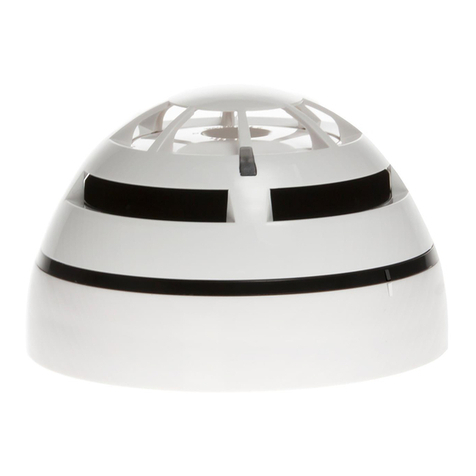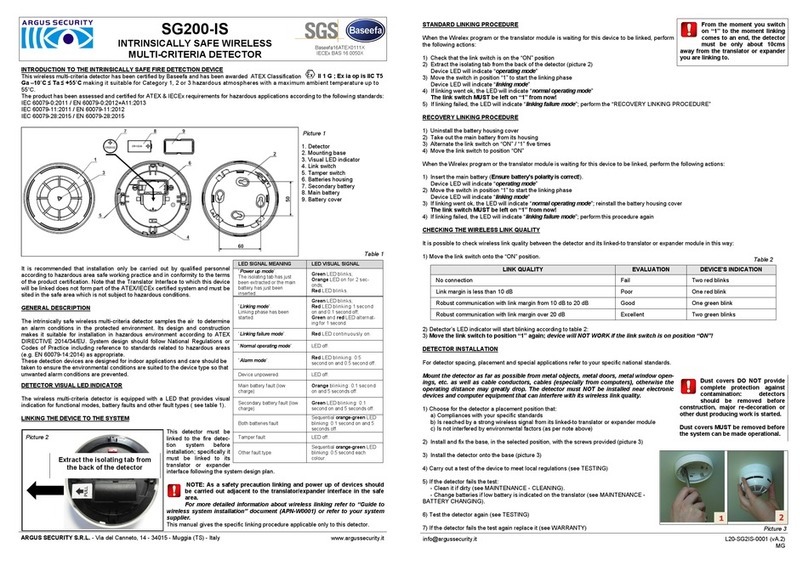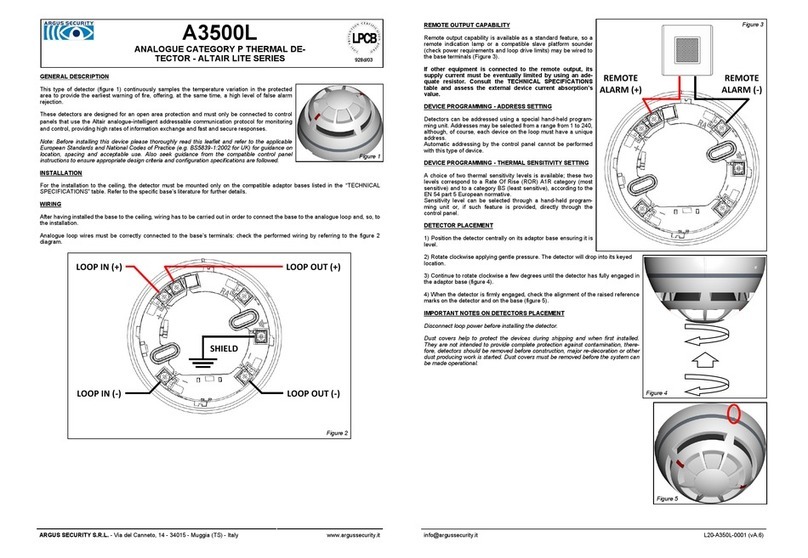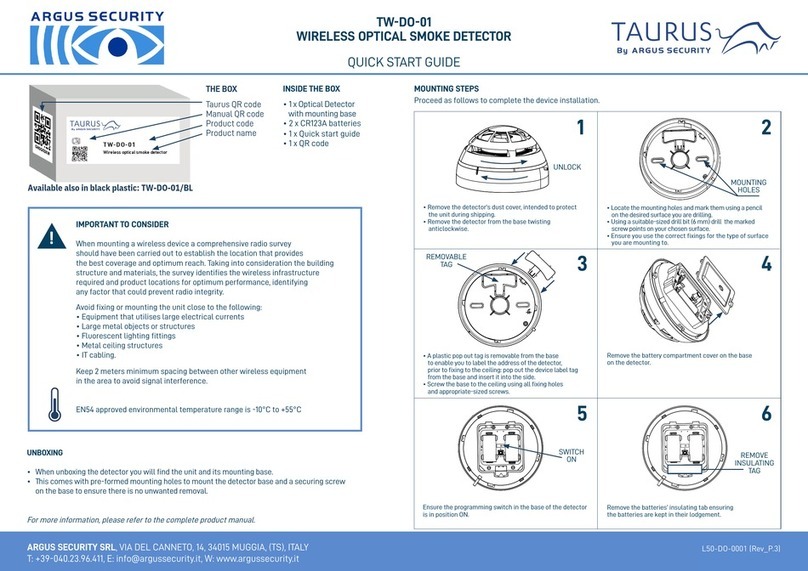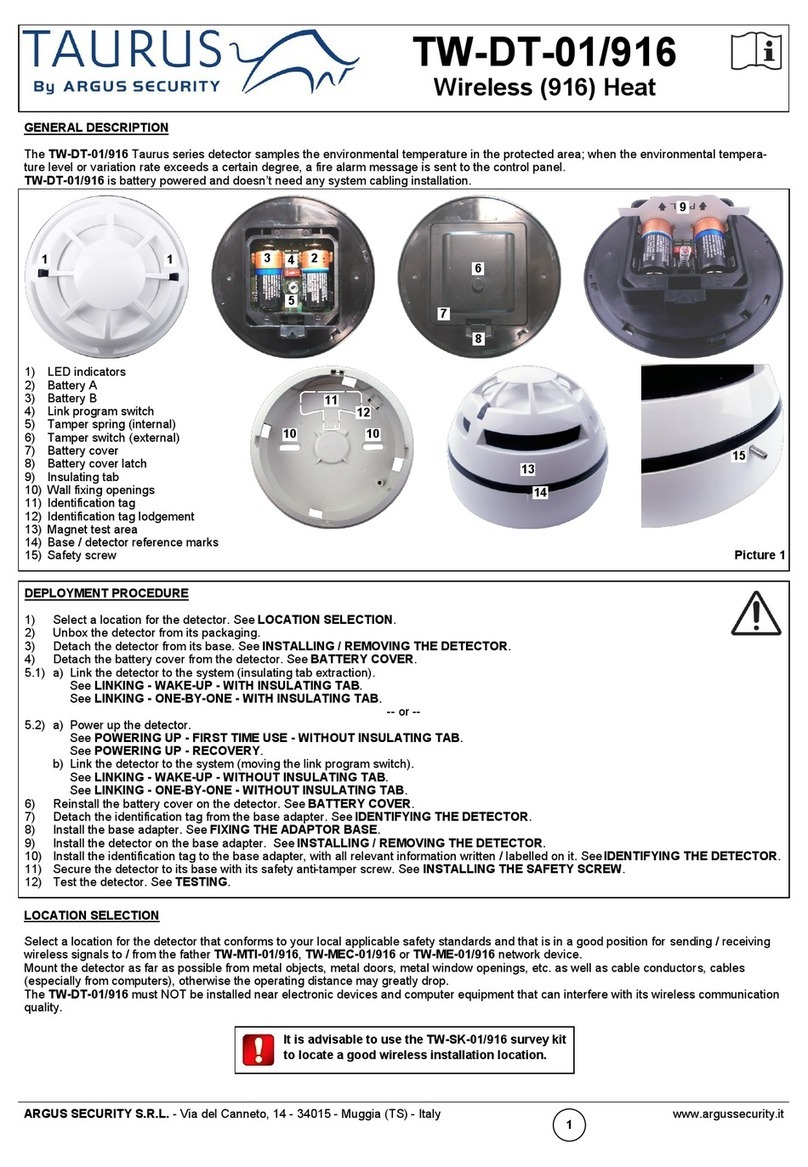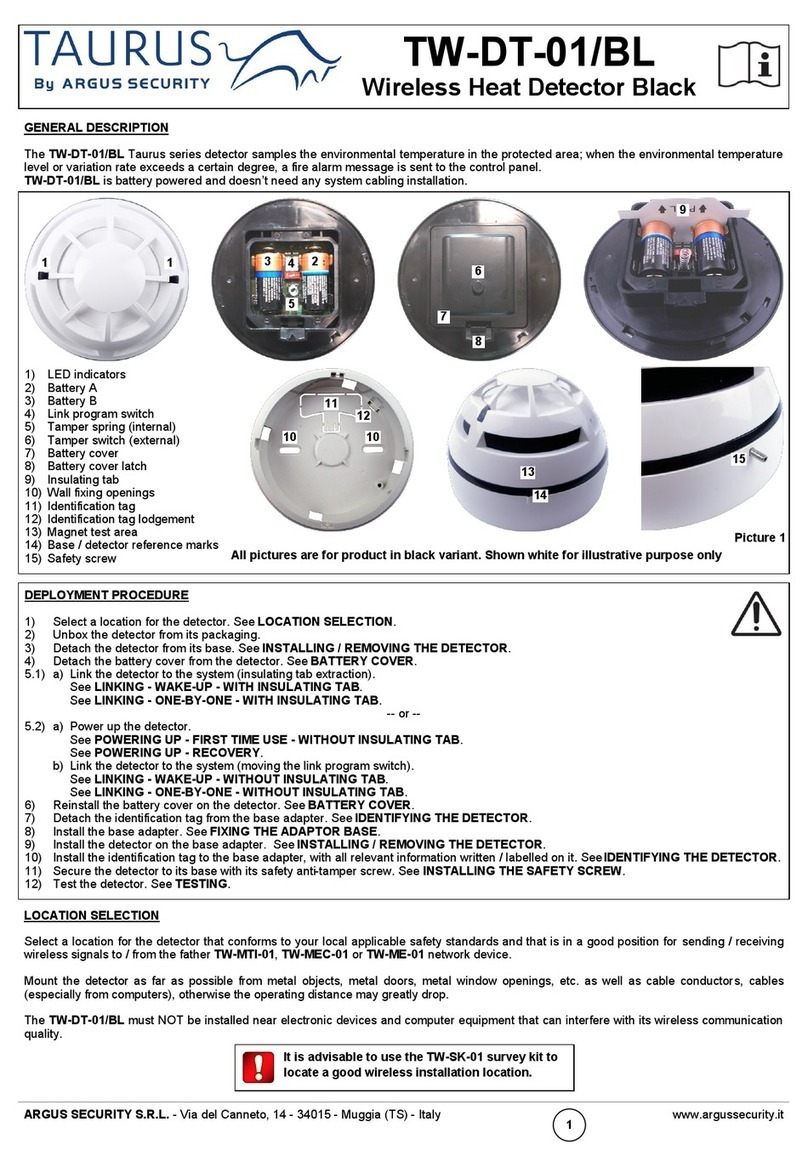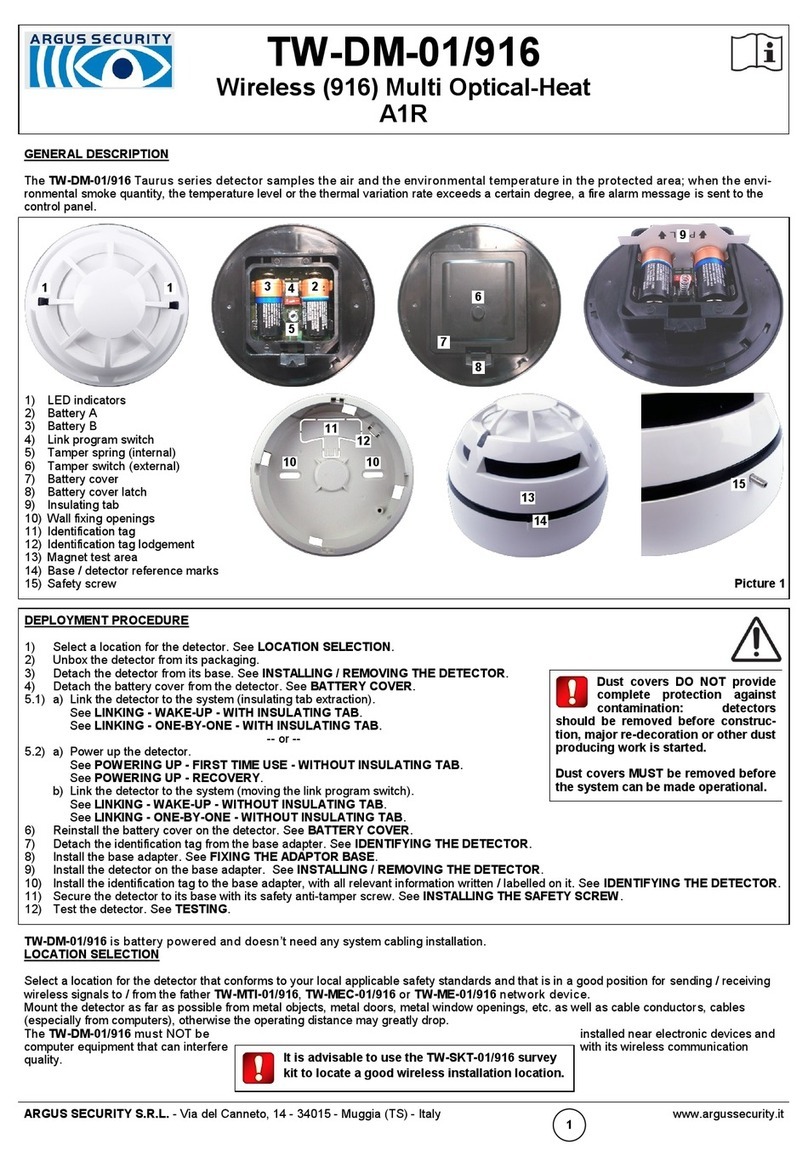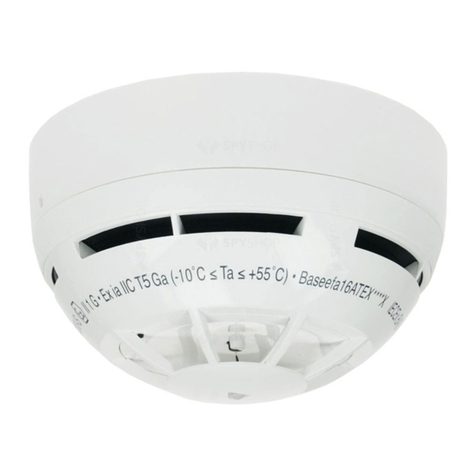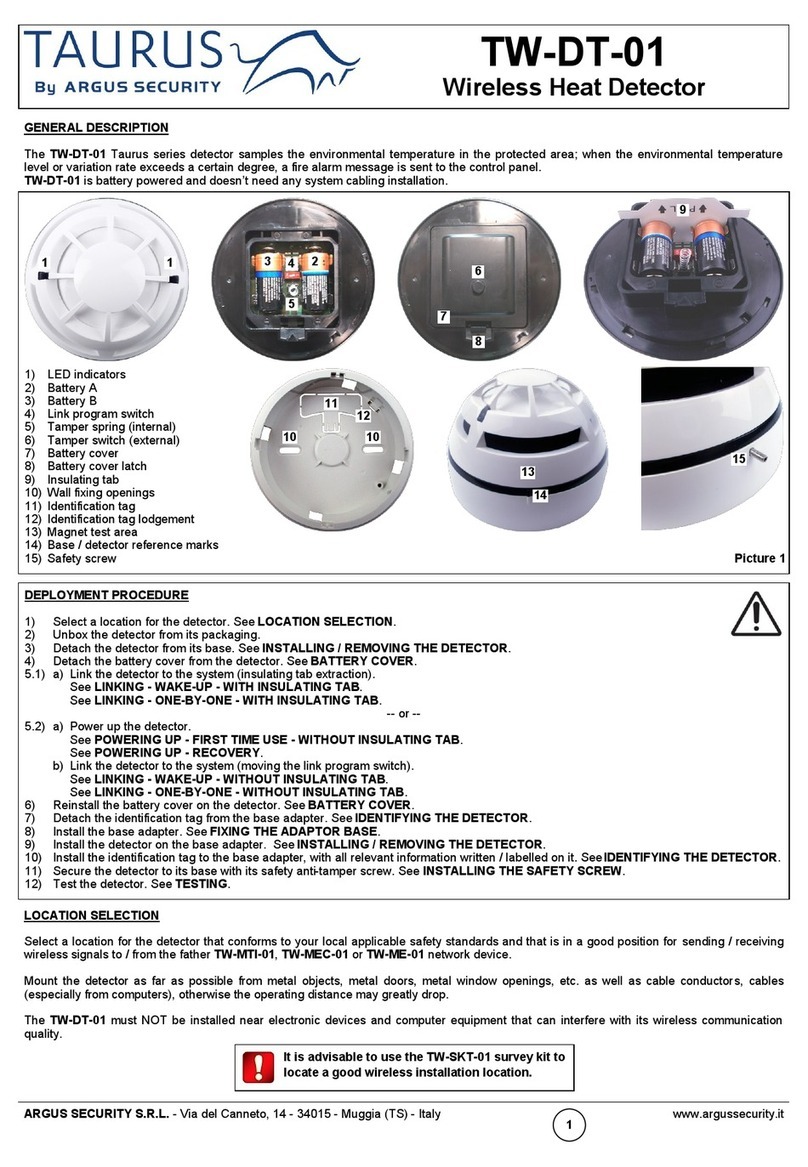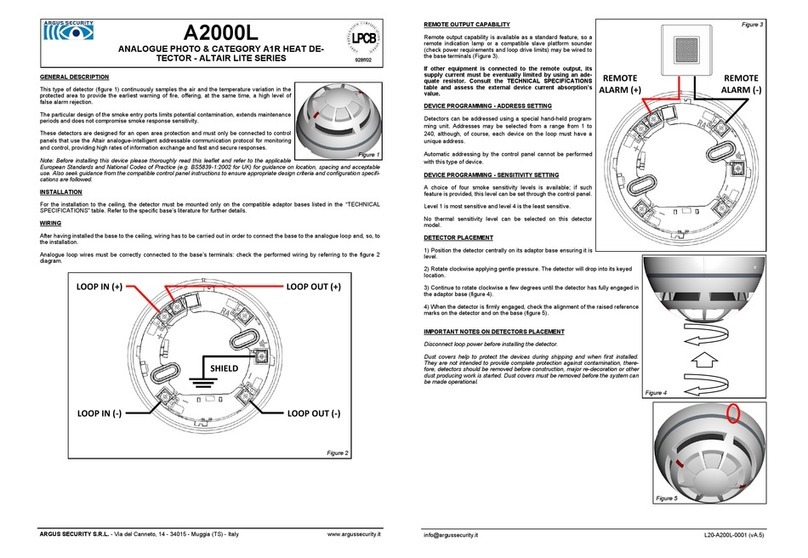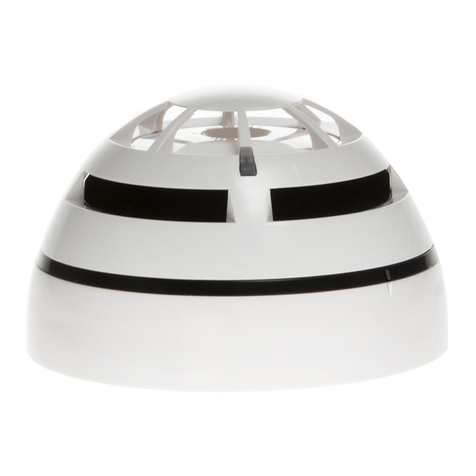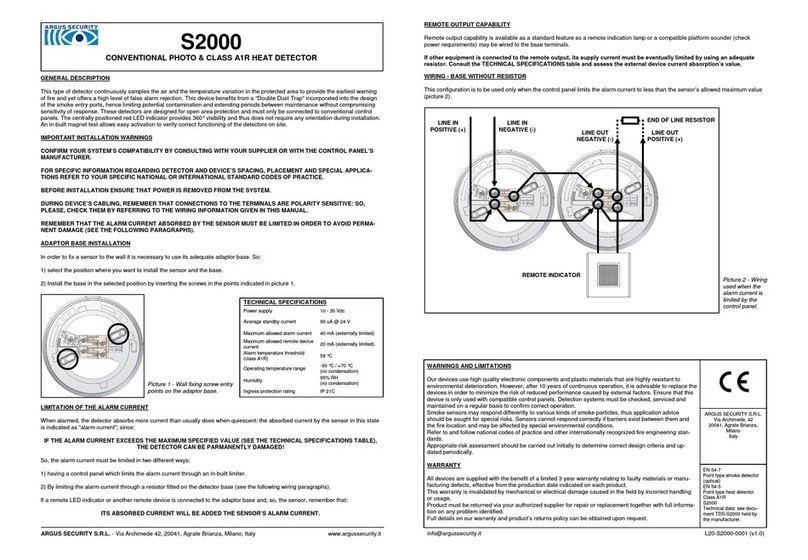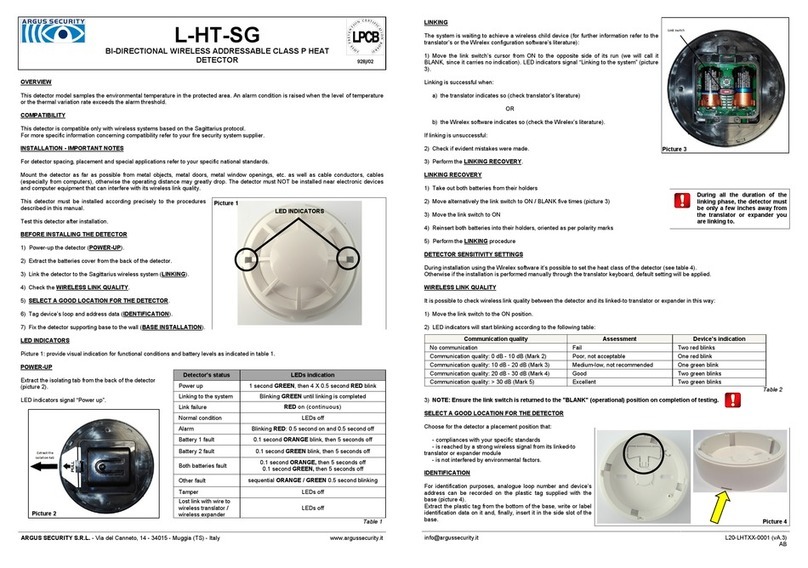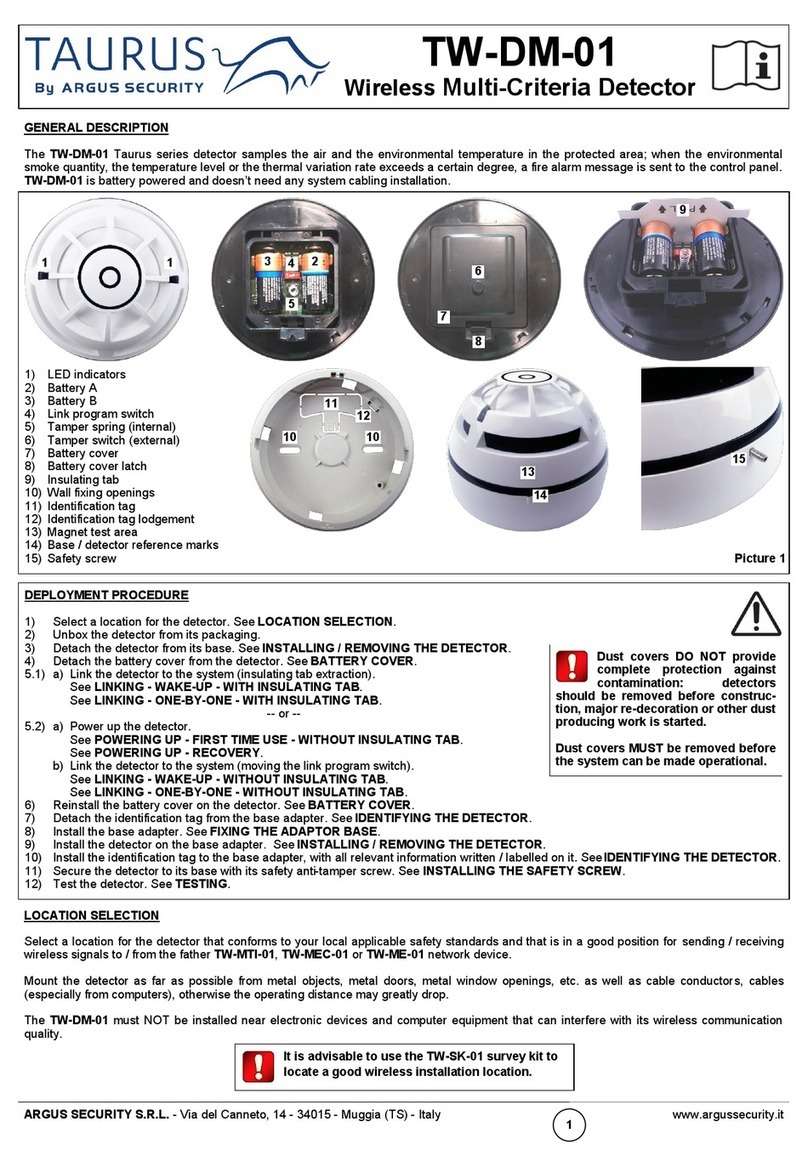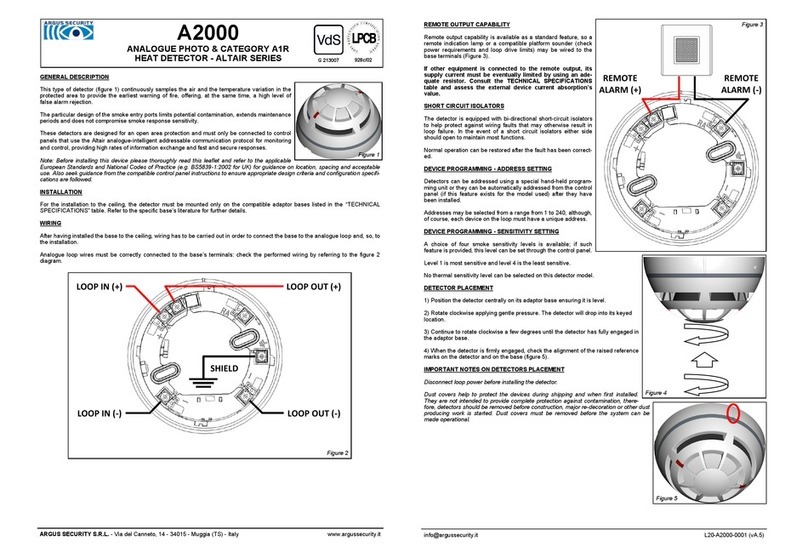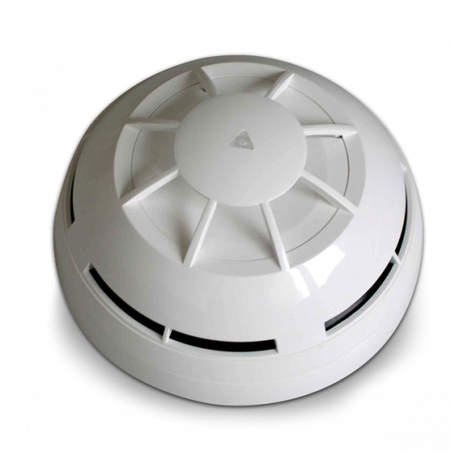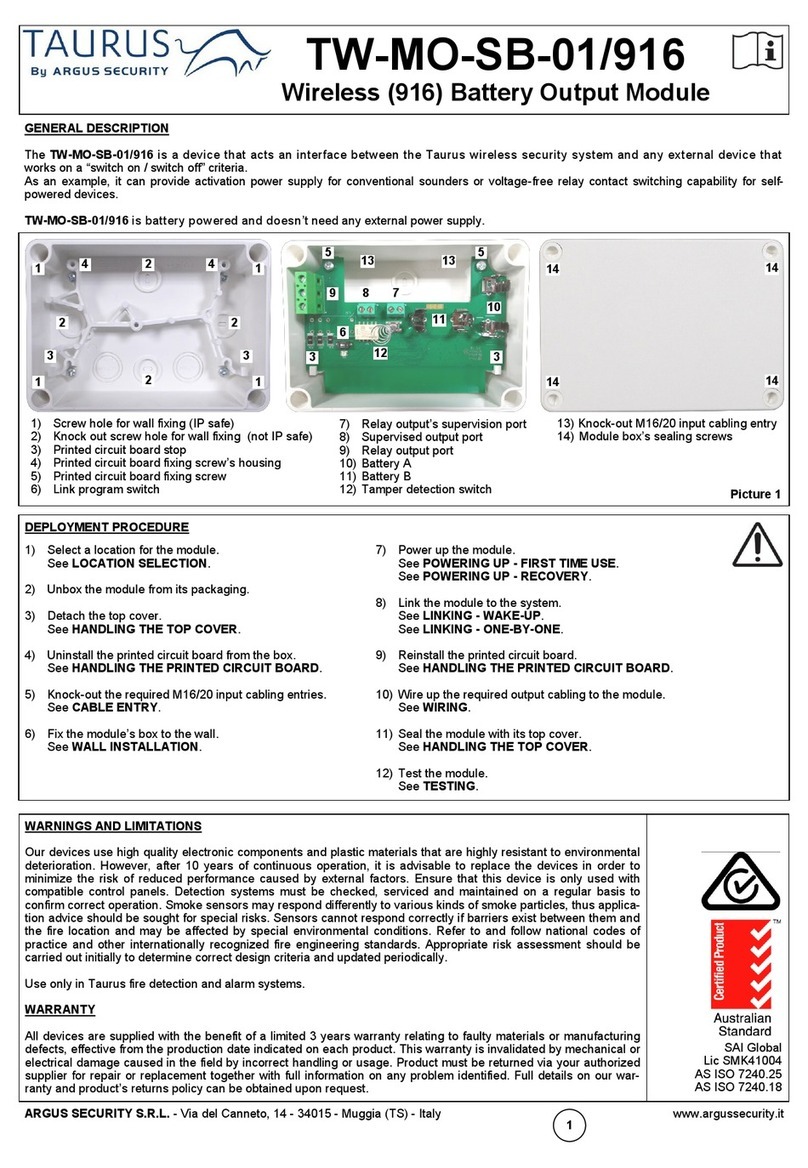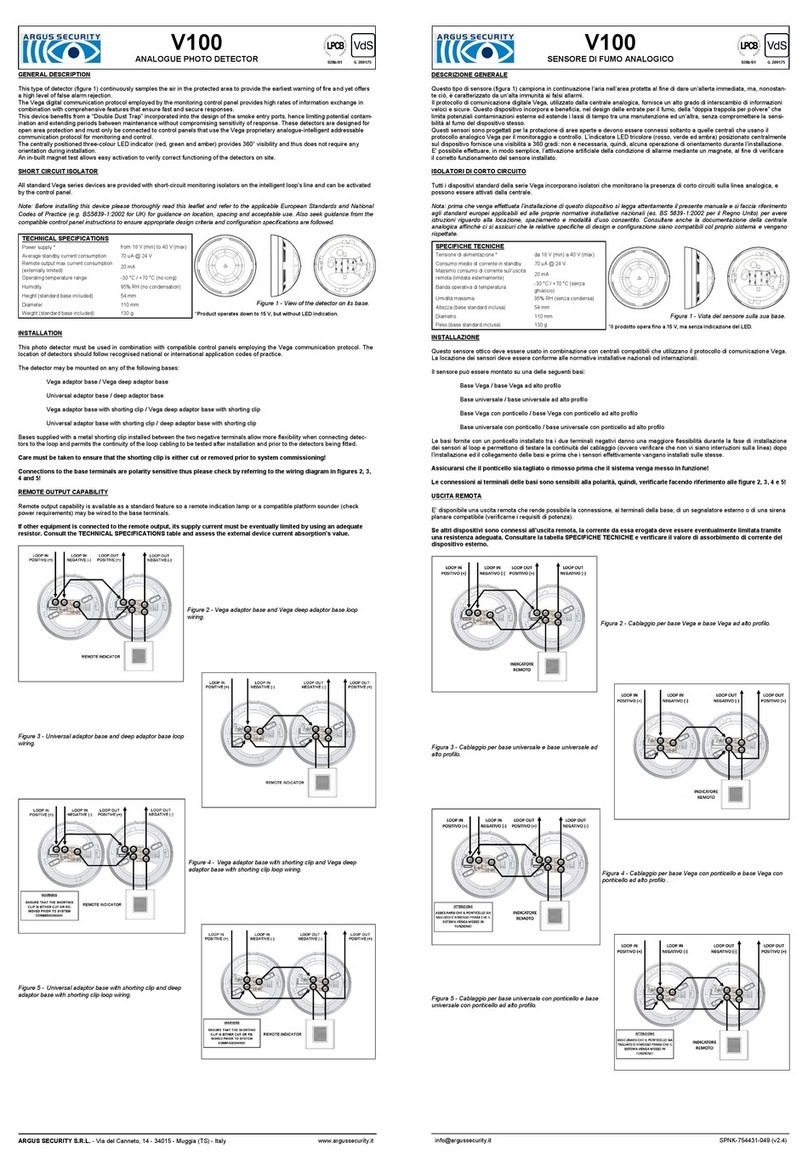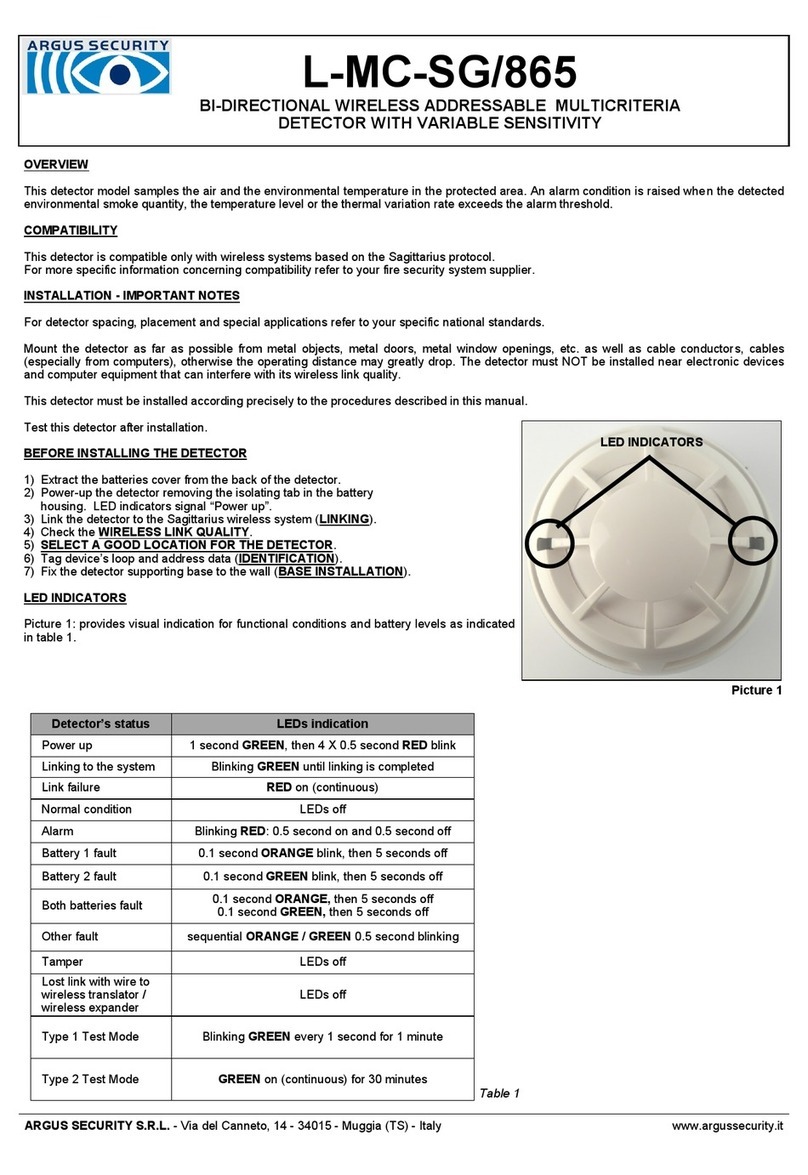LED INDICATOR STATUS MESSAGES
The LED indicator’s messages are used only during installation and servicing.
LED indicator is inactive when the front cover is in place for saving up battery charge (and due to the fact that normally the LED is hidden by
the front cover).
POWERING UP AND LINKING - PRELIMINARY NOTES
TW-MI-S-01/916 needs to be powered up with the supplied batteries.
Linking is the operation through which TW-MI-S-01/916 is “wirelessly connected” to a TW-MTI-01/916, TW-MEC-01/916 or TW-ME-01/916
Taurus network device.
POWERING UP - FIRST TIME USE
Use this procedure the first time you power up a TW-MI-S-01/916.
1) Make sure the Link / program switch is set on “ON”.
2) Insert the two supplied batteries into their device’s lodgments.
POWERING UP - DEVICE LINKED TO THE SYSTEM
Use this procedure when a TW-MI-S-01/916 is successfully linked to its Taurus system and you have to extract one or both batteries
(e.g. batteries substitution).
1) Reinsert the battery or both batteries into their lodgments.
If performing a batteries substitution, use two brand new batteries and substitute both of them.
Do not touch the Link / program switch.
POWERING UP - RECOVERY
Use this procedure when you fail to link successfully a TW-MI-S-01/916 or you want to link it again.
1) Move alternatively the Link / program switch 5 times.
2) Set the Link / program switch on “ON”.
3) Insert the two supplied batteries into their device’s lodgments.
LINKING - WAKE-UP
“Wake-up” linking consists in associating one or more child devices to the Taurus system altogether in a single operation.
Wake-up is performed either through the TauREX software or the TW-MTI-01/916 / TW-MEC-01/916 keyboard-screen interface; it CANNOT
be done through TW-ME-01/916 devices.
1) Create the “virtual model” of the TW-MI-S-01/916 either on TauREX or on the TW-MTI-01/916 / TW-MEC-01/916.
2) Power-up the module (either “first time use” or “recovery”).
3) Set the Link / program switch OPPOSITE to “ON”.
4) Trigger the wake-up procedure either from TauREX or from the TW-MTI-01/916 / TW-MEC-01/916.
5) Wait the end of the “wake-up” linking procedure.
6) Check on TauREX or from TW-MTI-01/916 / TW-MEC-01/916 for linking success. Consult their user manual.
LINKING - ONE-BY-ONE
“One-by-one” linking consists in associating one child device at a time to the Taurus system.
This operation is performed either through the TauREX software or the TW-MTI-01/916 / TW-MEC-01/916 keyboard-screen interface; it
CANNOT be done through TW-ME-01/916 devices.
1) Create the “virtual model” of the child device either on TauREX or on the TW-MTI-01/916 / TW-MEC-01/916.
2) Trigger the linking procedure either from TauREX or from the TW-MTI-01/916 / TW-MEC-01/916.
3) Power-up the child device (either “first time use” or “recovery”).
4) Set the child device’s Link / program switch OPPOSITE to “ON”.
5) Wait the end of the “one-by-one” linking procedure.
6) Check on TauREX or from TW-MTI-01/916 / TW-MEC-01/916 for linking success. Consult their user manual.
With the front cover installed, the LED indicator
remains inactive.
Table 1
ARGUS SECURITY S.R.L. - Via del Canneto, 14 - 34015 - Muggia (TS) - Italy www.argussecurity.it
3
Always ensure that the batteries are installed
properly, with their polarities matching the
indications on picture 2 or on the device.
Device status LEDs indication
Power up (DIP on “ON”) Blinks red 4 times
Power up (DIP opposite “ON”) Blinks green 4 times
Entering wake-up mode Blinks alternatively green / red 4 times
Link success (one-by-one) Blinks green 4 times, then the same pattern again
Link failure (one-by-one) Enters wake-up mode and signals “Entering wake-up mode” following this failure
Link success (wake-up) Blinks green 4 times, then same pattern again
Link failure (wake-up) Blinks green 4 times, then blinks red on once, then blinks alternatively green / red 4 times
Normal condition LED off (can be programmed so as to blink green every wireless communication)
Alarm activation Blinks red every 2 seconds
Battery fault LED off (can be programmed so as to blink amber every 5 seconds)
Tamper fault LED off
Replaced Blinks amber 2 times
Input port fault LED off (can be programmed so as to blink amber every 5 seconds)
